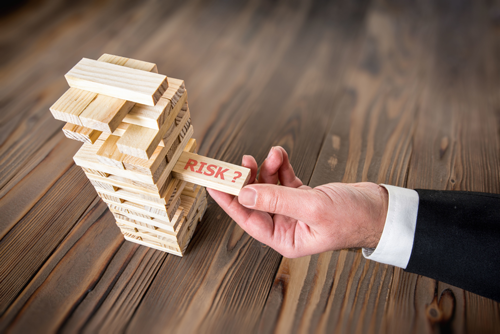Managing psychosocial hazards for a mentally healthy workplace
Managing the psychological health and safety of workers is not a new concept to Australian employers. Under the model WHS Act, “health” is defined as both physical and psychological health. Duty holders have had the responsibility of eliminating or minimising risks that could cause psychological injury or psychological harm for some time.
However, as highlighted by reports such as Marie Boland’s Review of the model Work Health and Safety laws (the Boland Review) and the Productivity Commission’s Mental Health Inquiry, there is a need to improve understanding and protection of worker mental health, and make related health and safety duties for Persons Conducting a Business or Undertaking (PCBUs) clearer.
This article explores the drivers for change and recent amendments to the model WHS laws, provides insight into how you can understand and address psychosocial hazards in your workplace, and highlights recent or upcoming changes to WHS/OHS legislation for each jurisdiction.
Drivers of change towards a focus on psychological health
Research conducted in 2014 by Beyond Blue, indicated a gap between workers’ desire for mentally healthy workplaces and the actual performance of their own work environments.
Findings from the recent Boland Review and Productivity Commission’s Mental Inquiry strengthened this conclusion. The Boland Review found there was a lack of specific requirements and clarity on how duty holders should manage psychosocial hazards and recommended amending the model WHS Regulations to more appropriately address the risks that may cause psychological injury and psychological harm, and the control measures to manage them.
The Productivity Commission Inquiry anticipated that almost half of all Australians will experience mental illness in their lifetime. It recommended that the model WHS laws be amended, to provide both physical and psychological health with the same consideration in legislation, and to implement other workplace initiatives to support worker mental health.

Defining psychosocial hazards in the model WHS laws
Based on the recommendation from the Boland Review, the model WHS Regulations were amended in 2022, and a model Code of Practice: Managing Psychosocial Hazards at Work published.
The new regulations provide clear definitions for ‘psychosocial hazard’ and ‘psychosocial risk’ as well as distinct obligations to manage and control psychosocial risks as far as is reasonably practicable.
Below is a list of common psychosocial hazards, potential causes, and control measures.
Understanding psychosocial hazards in your workplace
From CEOs to graduates, anyone in your organisation can be exposed to psychosocial hazards. A person can be exposed through the nature of their job, their work environment, a specific event or a workplace interaction.
The exposure may be reoccurring due to their job circumstances, such as working remotely, or may only occur once but have a prolonged affect, for example interacting with aggressive clients. Some workers may even be exposed to a combination of psychosocial hazards.
A person’s exposure to psychosocial hazards might not be immediately obvious. WorkSafe ACT offers some physical, emotional and behaviour reactions to look out for, including (but not limited to) headaches, insomnia, irritability and dependency on alcohol, drugs and tobacco. Safe Work Australia also has an infographic – What Psychosocial Hazards Sound Like at Work – to assist leaders, managers, and workers with recognising the signs.

Psychosocial hazards may lead to psychological or physical harm
Psychosocial hazards are mental or emotional stressors, that if not effectively managed, can have a detrimental impact on a person’s physical or psychological health. They may cause psychological injury or psychological harm such as anxiety or depression; and physical injury or physical harm such as chronic disease or fatigue-related workplace incidents.
A mental or emotional stress response may occur when a person feels unable to cope with their work, like they have little control or inadequate support to complete tasks, or feel unsafe in their work environment due to workplace bullying.
Psychosocial hazards can lead to absenteeism, staff turnover, poor work, or poor product quality, and can compromise workplace culture, put additional work-related stress on co-workers and affect the organisation’s customer service and bottom line.

Addressing psychosocial hazards using a risk management process
The new regulations require a PCBU to identify, assess and manage psychosocial hazards in accordance with the risk management process for other workplace health and safety hazards.
When determining control measures, the regulations also stipulate that the PCBU must have regard to all relevant matters, including (but not limited to):
- the duration, frequency and severity of exposure
- how the psychosocial hazards may interact
- the design of work, including job demands and tasks
- workplace interactions or behaviours.

Psychosocial hazards overview with potential causes and control measures
Click here to download this table as a PDF to share with your managers and team members.
Click here to download a table as a PDF to share with your managers and team members.
| Psychosocial hazard | Potential causes | Potential control measures |
| Psychosocial hazards related to job characteristics, design and management | ||
| High job demands or low job demands
|
|
|
| Low job control |
|
|
| Poor support |
|
|
| Lack of role clarity |
|
|
| Poor change management |
|
|
| Low recognition and reward |
|
|
| Poor organisational justice |
|
|
| Traumatic events or material |
|
|
| Remote or isolated work |
|
|
| Poor environmental conditions |
|
|
| Psychosocial hazards related to harmful behaviour | ||
| Workplace violence and aggression |
|
|
| Bullying |
|
|
| Harassment including sexual or gender-based harassment |
|
|
| Conflict or poor workplace relationships and interactions |
|
|
These are just some examples, provided by the Safe Work Australia model Code of Practice. Refer to the Code of Practice or your jurisdiction’s health and safety regulator for more information.

How each jurisdiction is protecting the psychological health of its workers
The WHS psychosocial risk amendments must be implemented in the WHS legislation for a jurisdiction before it can take effect there. Here is a snapshot of each jurisdiction’s progress:
Commonwealth
- The National Mental Health Commission released a digital platform containing resources, and a guide for organisations to create resources, relating to mentally healthy workplaces.
- The Work Health and Safety Regulations 2011 will be amended in April 2023 to reflect the new psychosocial risk provisions.
Australian Capital Territory
- At the time of publishing this article, the model WHS psychosocial risk amendments had not yet been adopted.
- WorkSafe ACT’s Strategy for Managing Work-Related Psychosocial Hazards 2021-23 was launched in October 2021.
New South Wales
- In May 2021, Safe Work NSW published their Code of Practice for managing psychosocial hazards at work.
- In October 2022, the Work Health and Safety Regulations 2017 were amended to include the new provisions in the NSW WHS Regulations.
- NSW’s State Insurance Regulatory Authority (SIRA) partnered with the Australian Rehabilitation Providers Association to assist those returning to work after psychological injuries.
- Safe Work NSW developed a free Workplace Wellbeing Assessment Tool (WWAT) to help organisations understand and manage workplace psychological safety.
Northern Territory
- At the time of publishing this article, the model WHS psychosocial risk amendments had not yet been adopted.
Queensland
- The Work Health and Safety Regulations 2011 will be amended in April 2023 to reflect the new psychosocial risk provisions. A Code of Practice will also commence.
- The Queensland Government developed a risk assessment tool to assist employers with identifying, assessing and controlling psychosocial hazards.
South Australia
- At the time of publishing this article, the model WHS psychosocial risk amendments had not yet been adopted.
- Wellbeing SA, an initiative of the South Australian Government, provides information and resources to support South Australians physically, mentally, and socially.
- SafeWork SA has put together a Psychological Health Safety Checklist to help small businesses meet their obligations.
Tasmania
- The Work Health and Safety Regulations 2022 came into effect on 12 December 2022 and include the psychosocial risk provisions.
- In January 2023, a Code of Practice for managing psychosocial hazards at work came into effect.
Victoria
- Victoria has not adopted the model WHS legislation, however feedback closed in March 2022 for the Victorian Government’s proposed Occupational Health and Safety Amendment (Psychological Health) Regulations which would make changes to recognise psychological health as a key factor in workplace health and safety, and provide guidance for employers on their obligations towards the mental health of employees. At the time of publishing this article, there was no commencement date.
- In August 2022, WorkSafe released a toolkit to help small businesses prevent mental injuries.
- WorkSafe Victoria provide guidance on mental health such as managing hazards like work-related stress but no definitive Code of Practice.
Western Australia
- A Code of Practice was published for the prevention and management of psychosocial hazards in the workplace.
- The Work Health and Safety (General) Regulations 2022 and Work Health and Safety (Mines) Regulations 2022 were amended on 24 December 2022 to include the new psychosocial risk provisions.

Achieving mentally healthy workplaces takes an integrated approach
Creating and sustaining a mentally healthy work environment takes an integrated and collaborative approach from people across all levels of an organisation.
Leaders and senior management can:
- be educated in the recent or upcoming changes to their state or territories’ WHS/OHS legislation, including their health and safety duty to protect workers from exposure to psychosocial hazards
- implement and integrate new organisational policies and practices to promote psychological health
- invest in mental and wellbeing strategies, such as training workers to be mental first aiders and offering free counselling through an employee assistance program
- endorse organisational change and build a trusting, fair and respectful workplace culture.
Managers and supervisors can:
- increase their knowledge on psychosocial hazard identification and control, and the most effective ways to approach and support their workers.
- set reasonable workloads and timelines
- encourage skills and career development
- lead by example – take regular breaks, finish on time, and take care of their own mental and physical wellbeing.
Workers can:
- be aware of the signs and symptoms of work-related stress and reach out for support
- be educated in their legal rights regarding psychosocial hazards
- offer support to colleagues who don’t seem themselves
- encourage their organisation to be proactive about mental wellbeing

References
- Beyond Blue Publication: State of Workplace Mental Health in Australia
- Engage Victoria Webpage: Proposed OHS Amendment (Psychological Health) Regulations
- Federal Register of Legislation Webpage: Work Health and Safety Amendment (Managing Psychosocial Risk and Other Measures) Regulations 2022
- Government of Western Australia Media Statement: Regulations on Psychosocial Hazards Now in Place
- Heads Up Webpage: For Employees
- Heads Up Webpage: For Managers
- Heads Up Webpage: Nine Attributes of a Healthy Workplace
- Heads Up Webpage: What is a Healthy Workplace?
- Marie Boland Final Report: Review of the model Work Health and Safety laws
- Mentally Healthy Workplaces website
- Model Work Health and Safety Regulations
- National Mental Health Commission Publication: Creating Resources to Support Mentally Healthy Workplaces
- Productivity Commission Mental Health Inquiry Report: Actions and Findings
- Queensland Government Legislation Webpage: Work Health and Safety (Psychosocial Risks) Amendment Regulation 2022
- Queensland Government Publication: Psychosocial Risk Assessment Tool
- Safe Work Australia Code of Practice: Managing Psychosocial Hazards at Work
- Safe Work Australia Code of Practice: Managing the Work Environment and Facilities
- Safe Work Australia Infographic: What Psychosocial Hazards Sound Like At Work
- Safe Work Australia Publication: Work-Related Psychological Health and Safety
- Safe Work Australia Webpage: Implementation of WHS Ministers’ Agreed Response to the Review of the Model WHS Laws
- SafeWork NSW Code of Practice: Managing Psychosocial Hazards at Work
- SafeWork NSW Webpage: Free Tool to Measure Workplace Mental Health
- SafeWork NSW Webpage: Work Health and Safety Amendment Regulation 2022
- SafeWork SA Webpage: Psychological Hazards & Work-Related Stress
- SIRA Webpage: Using Workplace Facilitated Discussions to Improve Outcomes for People with Psychological Injuries
- Wellbeing SA
- WorkSafe ACT Publication: Strategy for Managing Work-Related Psychosocial Hazards 2021-2023
- WorkSafe ACT Webpage: Mental Health
- WorkSafe QLD Code of Practice: Managing the Risk of Psychosocial Hazards at Work
- WorkSafe Tasmania Webpage: Acts and Regulations
- WorkSafe Victoria Webpage: Mental Health
- WorkSafe Victoria Webpage: Preventing and Managing Work-Related Stress
- WorkSafe WA Code of Practice: Psychosocial Hazards in the Workplace